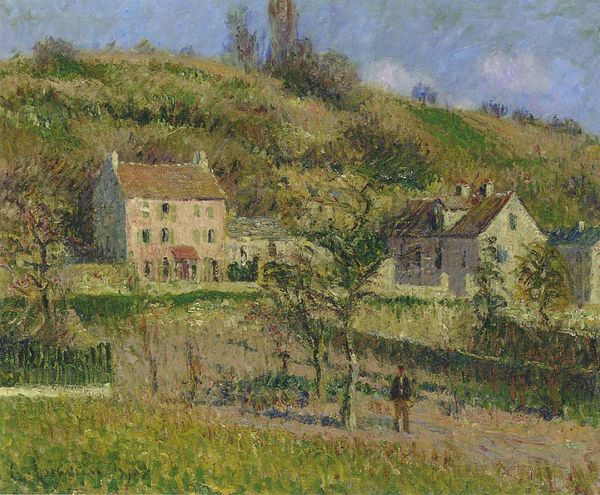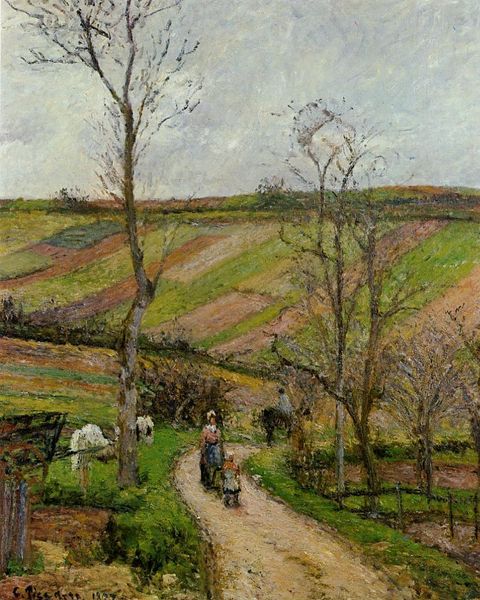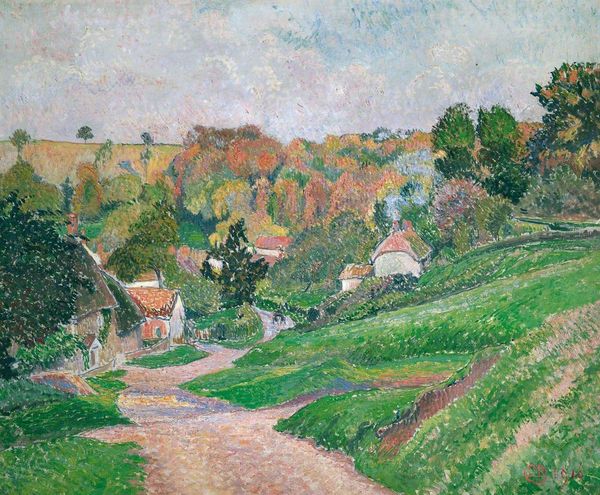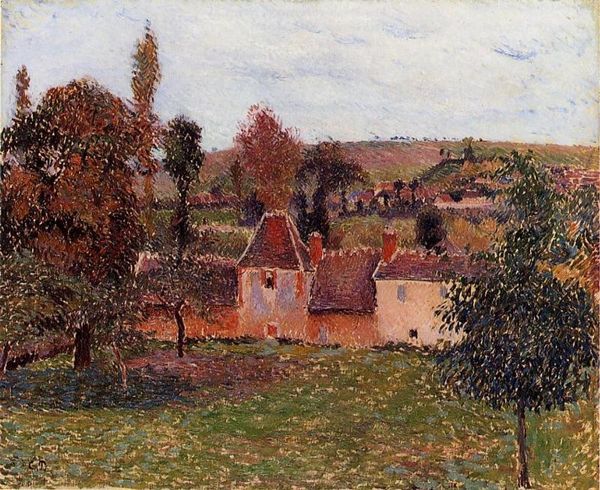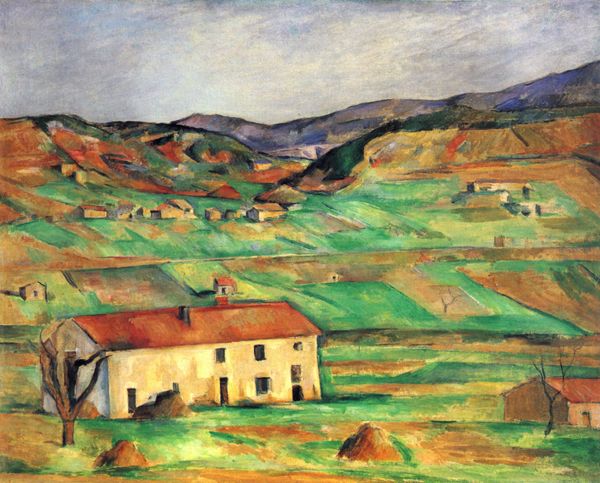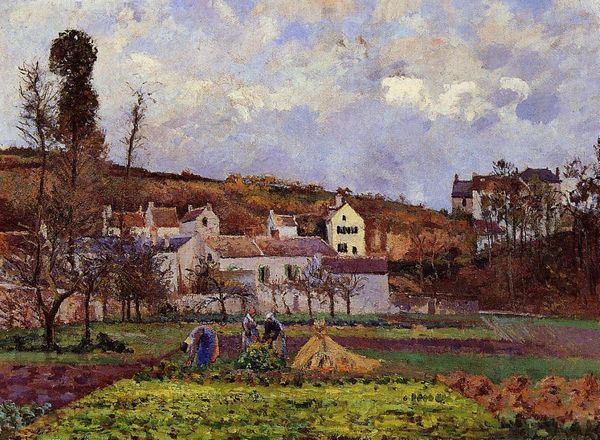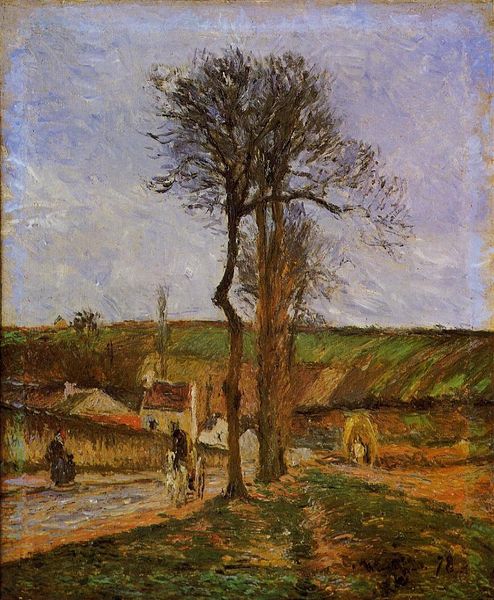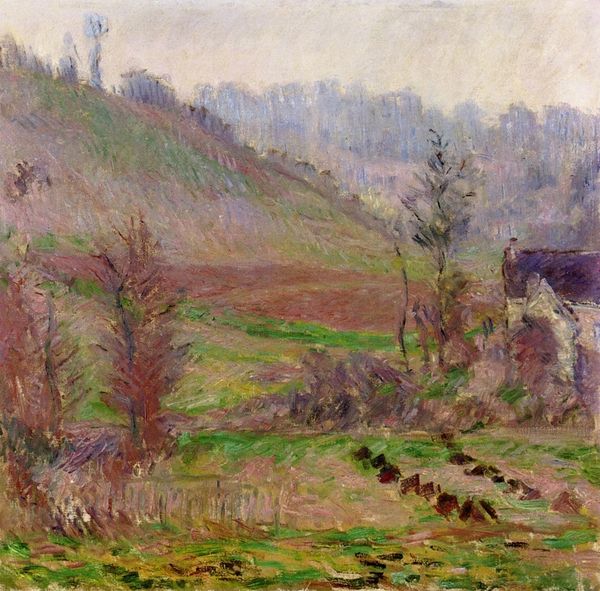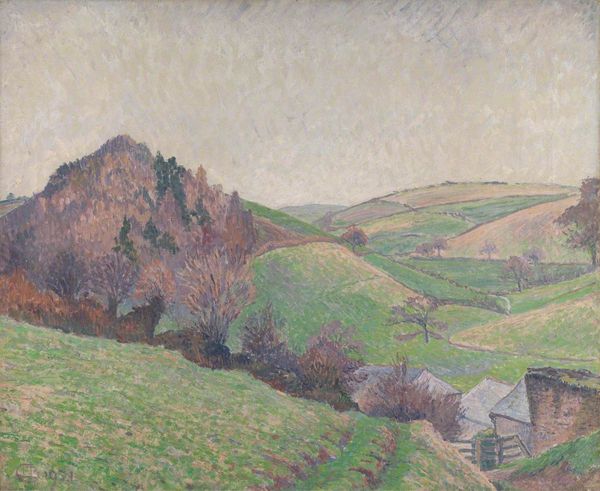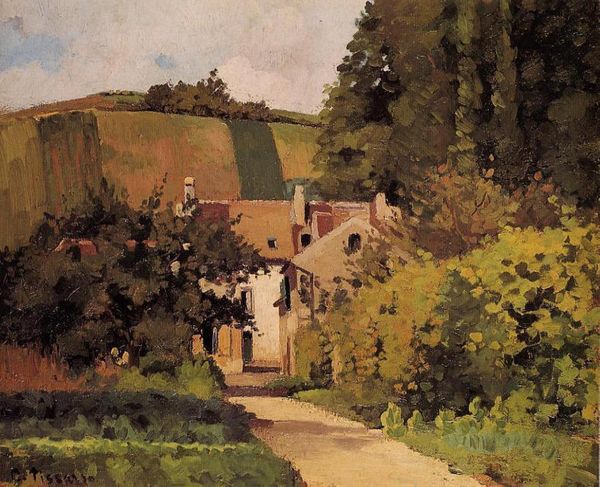
painting, plein-air, oil-paint
#
painting
#
impressionism
#
plein-air
#
oil-paint
#
landscape
#
oil painting
#
genre-painting
#
realism
Copyright: Public domain
Curator: Camille Pissarro’s "The Cabbage Patch at Pontoise," created in 1882 using oil paints, depicts a slice of rural life. The brushstrokes almost make you feel the wind on the fields, right? Editor: It does! What strikes me most is the contrast. The cultivated fields with the wild, untamed trees, it almost feels like a tension between nature and industry. How does this painting resonate within the wider context of art history and its own socio-historical environment? Curator: Exactly. Think about what "cultivated" means in practice. Pissarro's landscapes frequently show evidence of human labor shaping the land. Note how the layering of paint mimics the actual layering and working of the soil itself. The rough brushstrokes signify a move away from idealized representations, and toward depicting the material realities of agricultural labor and consumption, and a connection between peasant work and artistic practice. How do you interpret that connection? Editor: I guess it is interesting to think that Impressionism wasn't just about pretty colors and fleeting moments. There's something very grounding about thinking of the materials used – the oil paints, the canvas, even the cabbage patch – as connected to the actual labor involved in producing art. I had always considered the division of labor where the farmer toils away in the land for survival and artists capture scenes for the enjoyment of upper classes... Curator: Precisely! That’s a traditional boundary being questioned. Where did Pissarro source his materials? How were the pigments made? And what social class is depicted doing the labor, and how does that change the power structure between the artist and his subjects? Editor: Thinking about where Pissarro's materials came from does give me a different perspective, to consider this art beyond just its aesthetic. I definitely feel like I have a broader idea of what the artist intended to portray in this rural scene. Curator: Me too, I will not perceive this artwork in the same way from now on. I had been focusing solely on what I can see rather than understanding the implications of what's under the canvas.
Comments
No comments
Be the first to comment and join the conversation on the ultimate creative platform.
